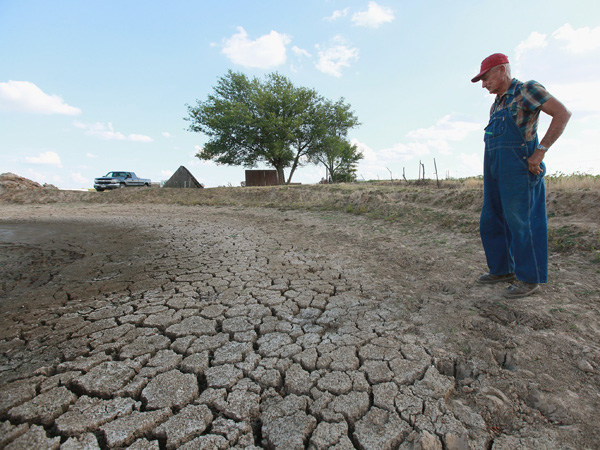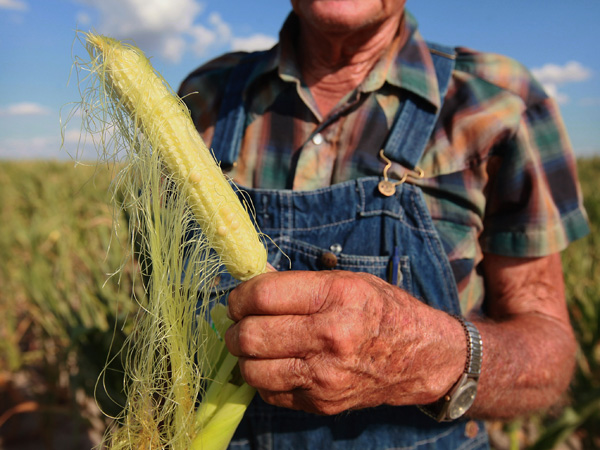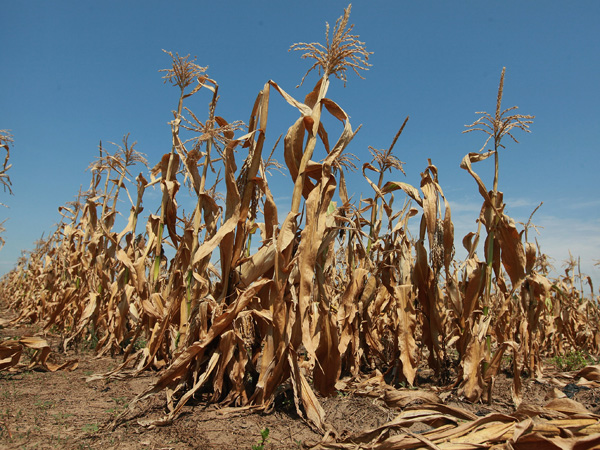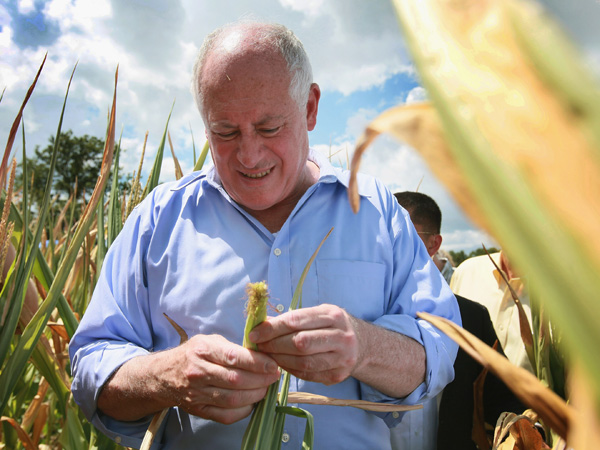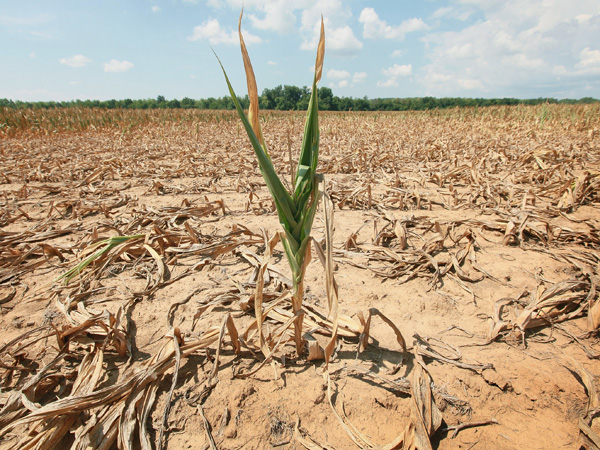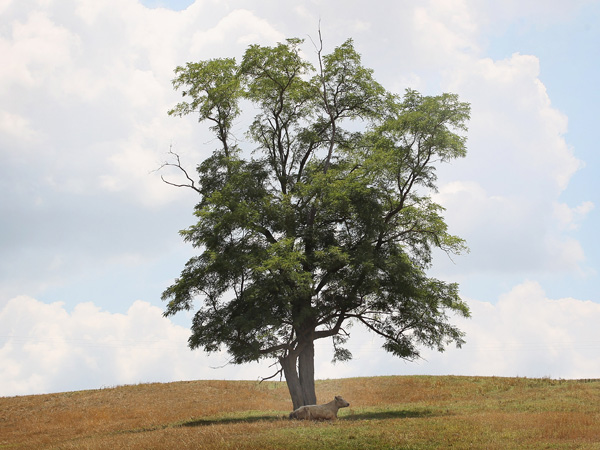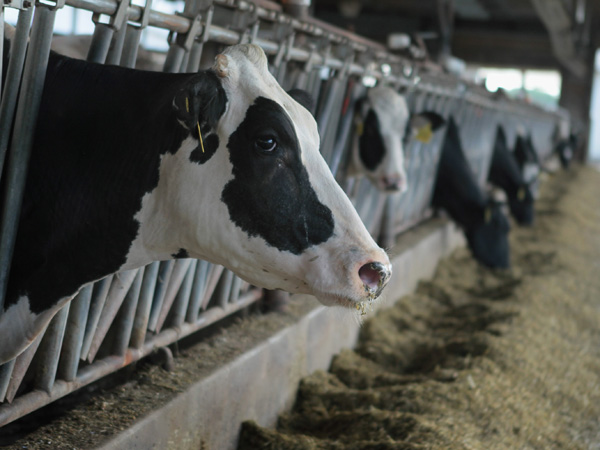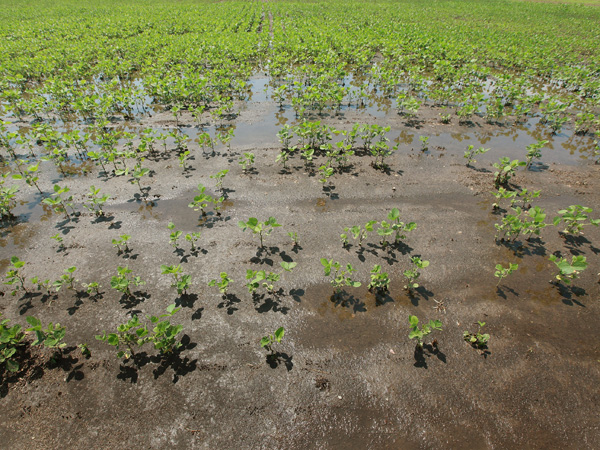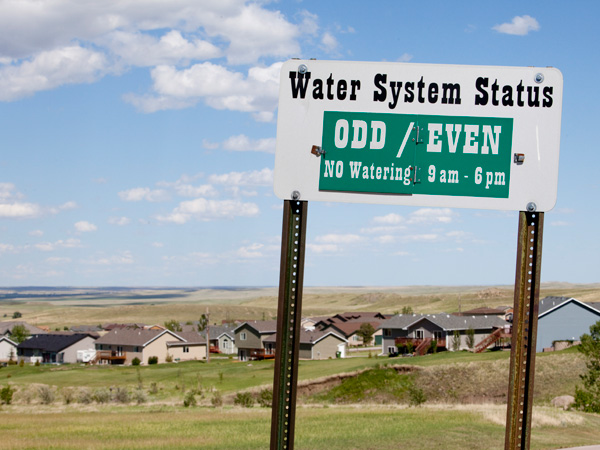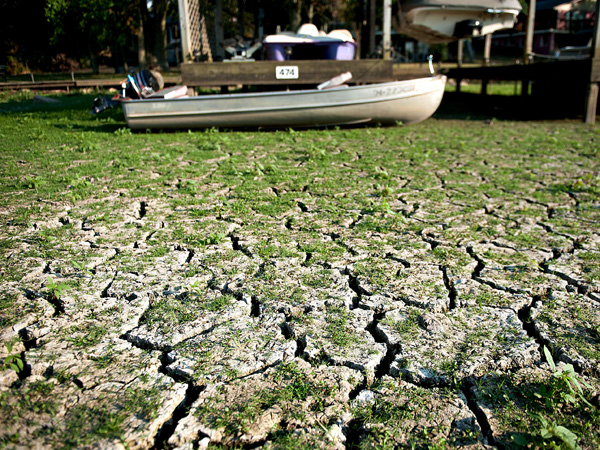High and Dry
The catastrophic drought is even worse for the rest of the economy than it is for farmers.
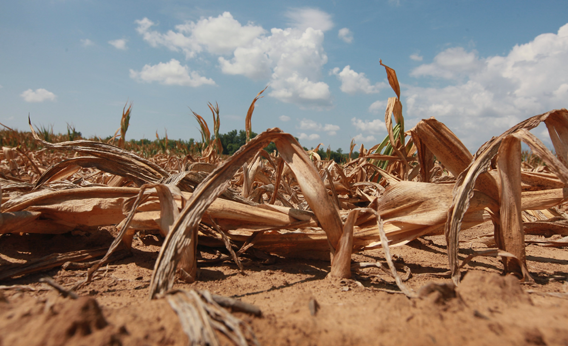
Photo by Scott Olson/Getty Images.
For most of human history, the vast majority of economic output was agricultural. The good news was that recessions—swings in the industrial business cycle—were largely unknown. The bad news was that human prosperity was at the mercy of forces beyond our control: above all else, the weather. The difference between a good harvest and a bad harvest was the difference between life and death.
Swings in the weather are less dire in advanced countries today, but they still matter. And we’re currently experiencing a run of really bad weather for farms, with extreme drought across a large and apparently growing swathe of the country. June was the third-driest on record in 118 years of data, and July looks no better. This isn’t going to push the United States into famine by any means, but the economic outlook is bad, and the policies in place to mitigate it are woefully inadequate. There’s even a chance that central banks will act in ways that make things worse.
The crux of the problem is corn and soybeans, two of the main engines of American farm exports. According to the Agriculture Department’s alarming drought map, 88 percent of American corn is grown in currently drought-affected areas. The University of Nebraska-Lincoln’s useful Drought Monitor website reports that 38 percent of the American corn crop and 30 percent of our soybean crop are currently in “very poor condition.”
The result is soaring prices for corn and soy on futures markets, foretelling higher food prices downstream in the weeks and months to come. Already China is looking to rely more on domestic corn and less on imports from the United States in response to higher prices. China can afford this. In developed countries where income growth has been much more sluggish, these increases in basic commodity prices will be much harder to adjust to. And the worst consequences will be seen in impoverished, food-importing countries. Anger over rising food prices was an important trigger for the Arab Spring. Political change in the Middle East hasn’t yet brought about rapid economic growth, so more instability there may be possible.
The American policy response is myopically focused on the narrow interests of farmers. The USDA has proclaimed a “drought disaster area” whose contours have been expanding as the situation worsens. Farmers in the afflicted zone are eligible for discounted loans and some other federal benefits.
Given the weak state of the overall national economy, these are broadly helpful policies and not just a sop to a narrow interest group. But Miles Kimball, an economist at the University of Michigan, has proposed a broad "federal lines of credit" program as a form of stimulus with more bang for the buck than conventional lending. The drought emergency-lending program is essentially a very small-scale version of that idea, so in the context of a recession, it helps.
But it’s not much of a policy response to the economic problem of the drought. Bad weather and ruined crops are, of course, terrible for the farmers who are afflicted. But by the same token, the resulting higher prices are a windfall for those farmers lucky enough to be outside the drought area. It’s actually nonfarmers who relentlessly lose out (by paying more for food) in the drought scenario, and targeted assistance at drought-stricken farmers is simply an aggregate transfer from people who eat food to people who grow it.
Meanwhile, farmers are hardly the only ones whose business prospects we should be worried about. There are only about 1.2 million farmers in America, and as a class, they’re richer than average. We have about eight times as many people working in bars and restaurants that are likely to see business hammered by higher food prices. For starters, restaurant meals are an indulgence for most families, so when the food they buy at home gets more expensive, they tend to cut back. Meanwhile, restaurateurs get hit on the other side with lower profit margins on more expensive food. They can of course raise prices, but that only further drives customers away. Lower margins and fewer customers mean reduced hours for servers and other staff. There’s no short-term policy cure for this sort of drought-induced pain beyond trying to improve general economic conditions. Over the long term, the more climate change there is, the more our existing patterns of life will be disrupted by bad weather.
But policymakers can make things worse. Higher food prices will show up as increases in the Consumer Price Index and be discussed by some as "food inflation." That framing will tend to encourage central banks to raise interest rates in response, which would be a disastrous course of action. Price increases because of a reduced quantity of corn are a very different beast than price increases because of an excessive quantity of money. Only the latter is the kind of true inflation that a central bank should properly worry about. Tightening money in response to supply shocks takes a bad situation and makes it worse. During much of 2008, the Federal Reserve seemed paralyzed about easing monetary conditions in response to the banking crisis because of the specter of rising oil prices. This time around we can only hope to do better. A nasty drought is a blow to the economy that we can’t do much to fix, but the biggest risk is of responding in a way that makes things worse.
Related Slide Show: What Devastating Drought Looks Like

